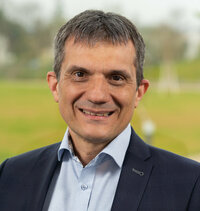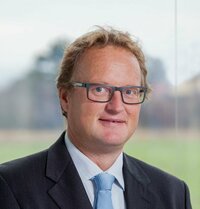ADC/DAC

Sampling Frequency and Word Width are Key Values
The sampling frequency and word width are the most important values when selecting converters. The basis of digital audio signal processing is the conversion of an analog signal into a digital, time-discrete signal, which after digital processing is converted back into an analog, time-continuous signal.
The sampling theorem states that an audio signal which is bandlimited to fmax must be sampled at a sampling frequency of at least fA= 2 x fmax.
Accordingly, the audio signal must be band-limited by an analog low-pass filter before digitization.
Samples Contacts NewsFIR Filter to Reduce the Sampling Frequency
In order to keep the filter specification and the associated implementation effort low, most audio applications use a multiple of the actually required sampling frequency. In order to reduce the computational effort for downstream digital processing caused by the higher sampling frequency, a multi-stage decimation of the sampling frequency is usually carried out with anti-aliasing filters. These are often implemented as FIR (Finite Impulse Response) filters. FIR filters have the advantage that they have a linear phase and by multi-phase splitting, including decimation, the number of filter operations can be reduced by the decimation factor. Before the digital-to-analog conversion, an analog procedure must be followed, i.e. the audio signal is sampled in stages with subsequent anti-aliasing filtering.
The reduction of the filter operations is also achieved by the interpolation factor using the same splitting procedure. Step-up sampling minimizes the design requirements of the downstream analog low-pass filter in the same way as for the analog input filter. Over-sampling therefore helps to reduce the BOM costs in analog filter design to a minimum. And there is another important feature for combining over-sampling and low-pass filtering. If the filter amount are carried out in an sufficiently high word width, the noise power produced by the quantization is reduced by the factor 1/fA. This improves the SNR (Signal to Noise Ratio)and increases the quality of the audio signal.
Word Width Determines the Amount of Quantization Noise
Besides the sampling frequency, the word width is the second important value to consider when selecting converters. It determines the amount of quantization noise in the audio signal. The higher the word width is selected, the lower the proportion of noise power, and the better the SNR.
In order to meet the highest demands in digital audio processing, CODICO offers a wide range of converters with word widths up to 24bits and sampling frequencies of 192 kHz and more. In addition to differential inputs and outputs and integrated amplifiers, converters in multi-channel versions and with digital signal processing are also available.
Manufacturers & Contacts

AKM
AKM offers customers optimised solutions using a wide range of semiconductor sensors and has been working with CODICO since 1999. AKM uses analogue/digital mixed-signal processes as technology. In particular, the audio ICs, which combine high sound quality with low power consumption, as well as magnetic sensors and gas sensors have made AKM a major player in the European IC market.
Infos Samples

SYNAPTICS
SYNAPTICS is a semiconductor manufacturer of IoT, AI and human-machine interface products based in Santa Clara, California. SYNAPTICS has many years of experience in audio/video, wireless connectivity, displays, voice recognition, touch pad modules, fingerprint sensors and embedded AI processors.
Infos Samples
